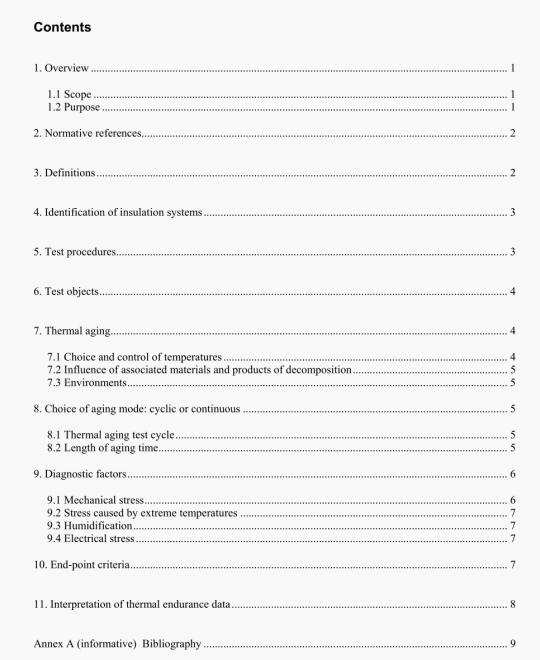IEEE 99:2007 pdf free download.IEEE Recommended Practice for the Preparation of Test Procedures for the Thermal Evaluation of Insulation Systems for Electrical Equipment.
7.2 Influence of associated materials and products of decomposition
Test procedures should take account of possible degrading etkcts of associated materials on insulation systems. Such materials may bc pan of the insulation system or adjacent parts in its physical support. in the equipment itself, or in the cooling medium. The ventilation used during the aging of models should not significantly affect the aging mechanism normally experienced in service. Considerations should be given to the removal or retention of decomposition products.
For concerns about the influence of associated materials, products of decomposition. or influence of possible interaction with cooling medium, compatibility tests should be considered in addition to the Electrical Insulation System (EIS) test.
7.3 Environments
It should be noted that, in many types of equipment. gases or liquids are part of the insulation system and must be considered by the committee in developing test procedures.
Where equipment operates under different atmospheric conditions more severe than air (such as chemical. dust, liquid. gas). the test conditions should simulate the service conditions when relevant. Thus, in such case . environmental conditioning may be included in the test procedure. Thermal aging results, in different environmental conditions. may not be directly comparable.
8. Choice of aging mode: cyclic or continuous
8.1 Thermal aging test cycle
One of the commonly used procedures of thermal aging is to expose the specimens for a given period of time to the temperature conditions. After exposure to temperature, the specimens are then subjected to diagnostic factors. The temperature-diagnostic factor exposure is refened to as a cycle and is repeated until the end point is reached. however, thermal aging is sometimes applied continuously, and the diagnostic factors are applied periodically.
When cyclic testing is used, there should be a rational relation between length of cycle, exposure temperature, and expected operating temperature. Table 2 is an illustrative example of how the cyclic procedure may be used. The length of the aging cycle at each exposure temperature should be selected to approximate one tenth of the expected specimen life by this test. Values of thermal aging cycles may be established for specific equipment. The time or temperature may be adjusted to make the best use of test facilities.
For equipment that is cyclically or periodically exposed to temperature extremes in service, it may be necessary to consider the additional stress that may he introduced in this fashion. Periodic temperature changes within each test cycle may be required to meet the functional needs for some types of service. In such cases, the exposure time at a temperature is not the equivalent of a steady state temperature (see also 9.2).
IEEE 99:2007 pdf free download
